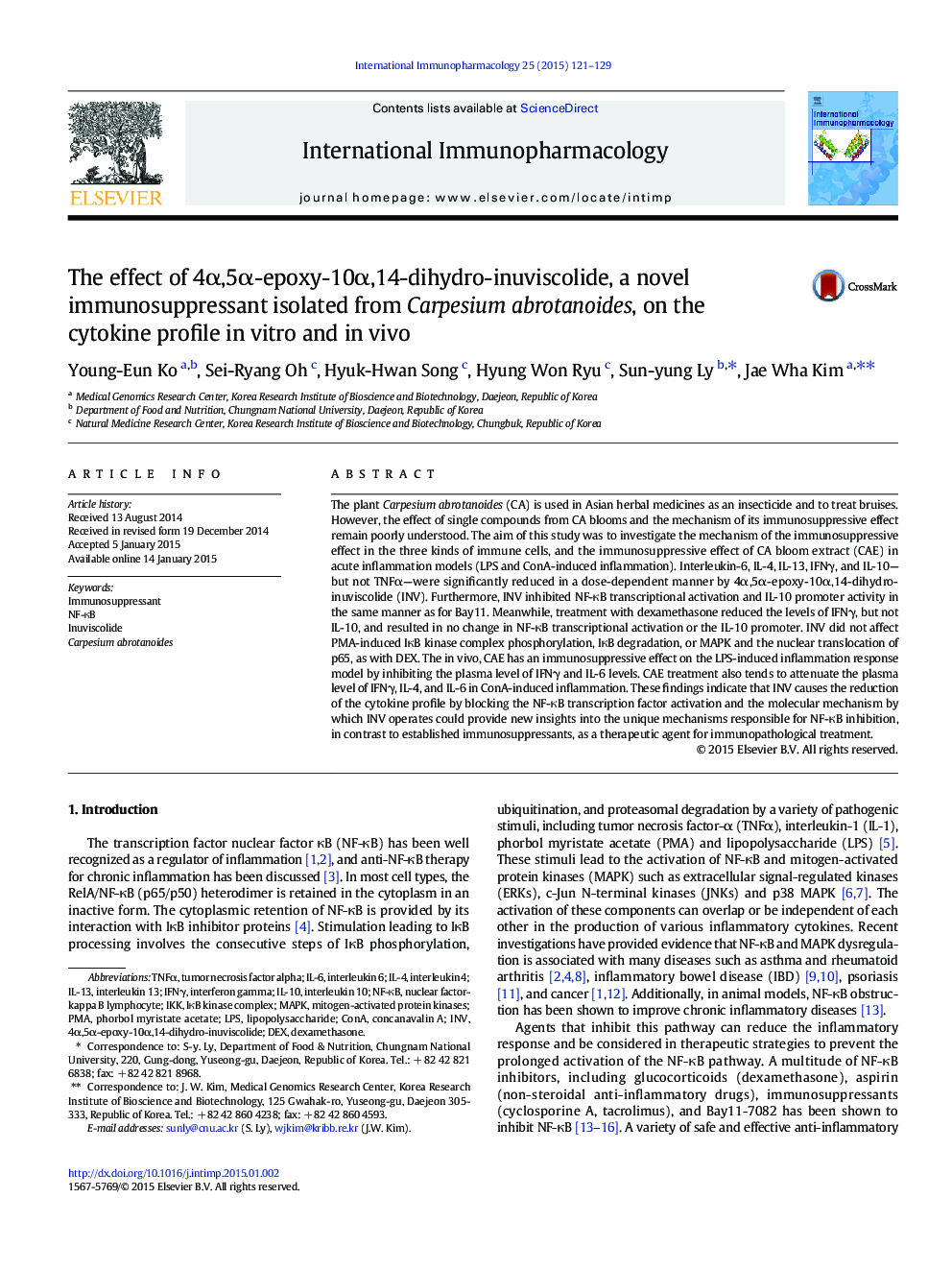| Article ID | Journal | Published Year | Pages | File Type |
|---|---|---|---|---|
| 5832379 | International Immunopharmacology | 2015 | 9 Pages |
â¢CAE has an anti-inflammatory effect on the inflammation-induced mouse model.â¢INV isolated from CAE decreased IL-6, IL-4, IL-13, IFNγ and IL-10 in activated immune cells.â¢INV inhibited the activation of NF-κB transcriptional factor.â¢The NF-κB-inhibition mechanism of INV differed from that of the synthetic NF-κB inhibitor.â¢INV may act as a potent immunosuppressant for the treatment of immunopathology.
The plant Carpesium abrotanoides (CA) is used in Asian herbal medicines as an insecticide and to treat bruises. However, the effect of single compounds from CA blooms and the mechanism of its immunosuppressive effect remain poorly understood. The aim of this study was to investigate the mechanism of the immunosuppressive effect in the three kinds of immune cells, and the immunosuppressive effect of CA bloom extract (CAE) in acute inflammation models (LPS and ConA-induced inflammation). Interleukin-6, IL-4, IL-13, IFNγ, and IL-10-but not TNFα-were significantly reduced in a dose-dependent manner by 4α,5α-epoxy-10α,14-dihydro-inuviscolide (INV). Furthermore, INV inhibited NF-κB transcriptional activation and IL-10 promoter activity in the same manner as for Bay11. Meanwhile, treatment with dexamethasone reduced the levels of IFNγ, but not IL-10, and resulted in no change in NF-κB transcriptional activation or the IL-10 promoter. INV did not affect PMA-induced IκB kinase complex phosphorylation, IκB degradation, or MAPK and the nuclear translocation of p65, as with DEX. The in vivo, CAE has an immunosuppressive effect on the LPS-induced inflammation response model by inhibiting the plasma level of IFNγ and IL-6 levels. CAE treatment also tends to attenuate the plasma level of IFNγ, IL-4, and IL-6 in ConA-induced inflammation. These findings indicate that INV causes the reduction of the cytokine profile by blocking the NF-κB transcription factor activation and the molecular mechanism by which INV operates could provide new insights into the unique mechanisms responsible for NF-κB inhibition, in contrast to established immunosuppressants, as a therapeutic agent for immunopathological treatment.
